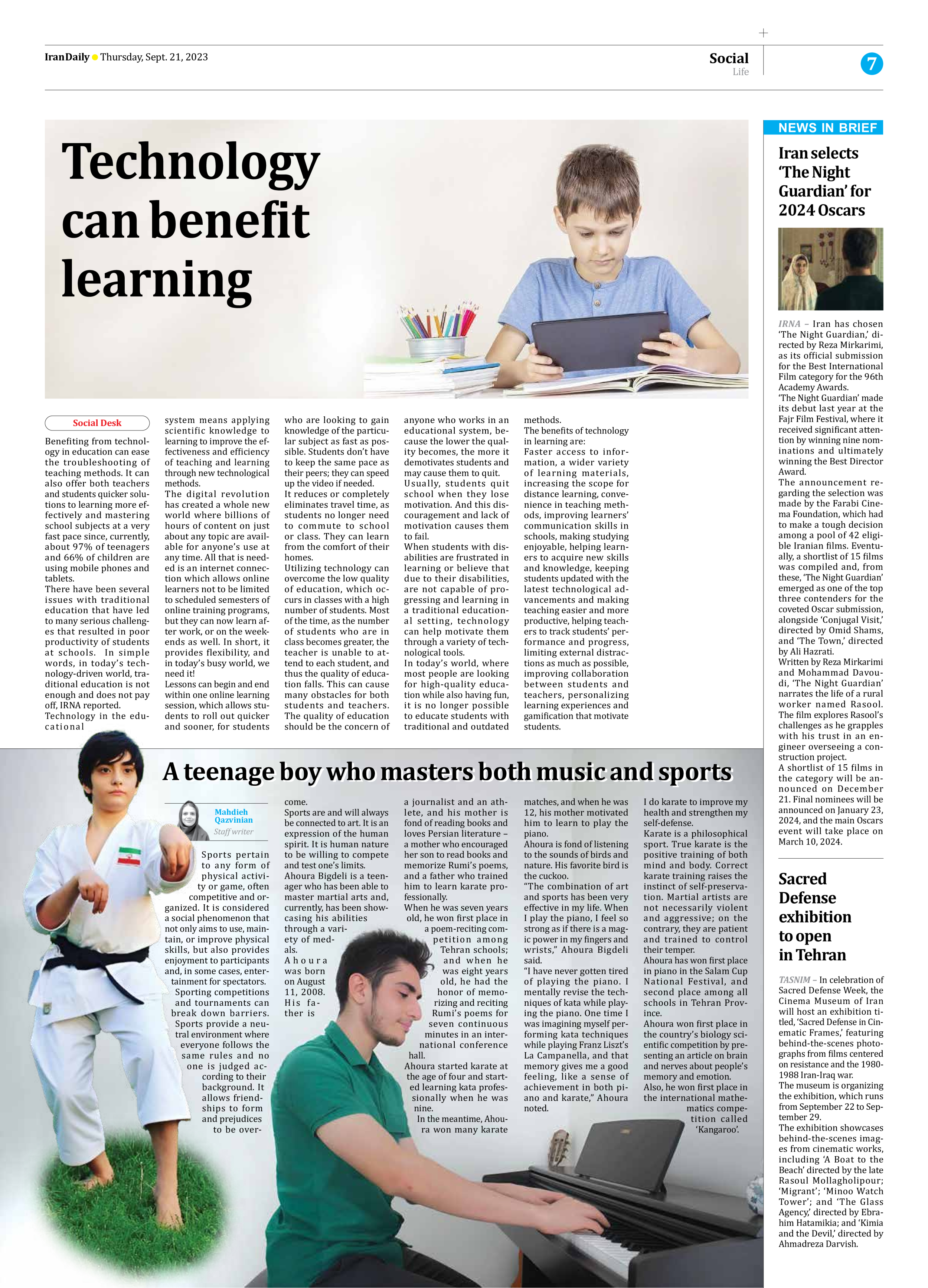
Technology can benefit learning
Benefiting from technology in education can ease the troubleshooting of teaching methods. It can also offer both teachers and students quicker solutions to learning more effectively and mastering school subjects at a very fast pace since, currently, about 97% of teenagers and 66% of children are using mobile phones and tablets.
There have been several issues with traditional education that have led to many serious challenges that resulted in poor productivity of students at schools. In simple words, in today’s technology-driven world, traditional education is not enough and does not pay off, IRNA reported.
Technology in the educational system means applying scientific knowledge to learning to improve the effectiveness and efficiency of teaching and learning through new technological methods.
The digital revolution has created a whole new world where billions of hours of content on just about any topic are available for anyone’s use at any time. All that is needed is an internet connection which allows online learners not to be limited to scheduled semesters of online training programs, but they can now learn after work, or on the weekends as well. In short, it provides flexibility, and in today’s busy world, we need it!
Lessons can begin and end within one online learning session, which allows students to roll out quicker and sooner, for students who are looking to gain knowledge of the particular subject as fast as possible. Students don’t have to keep the same pace as their peers; they can speed up the video if needed.
It reduces or completely eliminates travel time, as students no longer need to commute to school or class. They can learn from the comfort of their homes.
Utilizing technology can overcome the low quality of education, which occurs in classes with a high number of students. Most of the time, as the number of students who are in class becomes greater, the teacher is unable to attend to each student, and thus the quality of education falls. This can cause many obstacles for both students and teachers. The quality of education should be the concern of anyone who works in an educational system, because the lower the quality becomes, the more it demotivates students and may cause them to quit.
Usually, students quit school when they lose motivation. And this discouragement and lack of motivation causes them to fail.
When students with disabilities are frustrated in learning or believe that due to their disabilities, are not capable of progressing and learning in a traditional educational setting, technology can help motivate them through a variety of technological tools.
In today’s world, where most people are looking for high-quality education while also having fun, it is no longer possible to educate students with traditional and outdated methods.
The benefits of technology in learning are:
Faster access to information, a wider variety of learning materials, increasing the scope for distance learning, convenience in teaching methods, improving learners’ communication skills in schools, making studying enjoyable, helping learners to acquire new skills and knowledge, keeping students updated with the latest technological advancements and making teaching easier and more productive, helping teachers to track students’ performance and progress, limiting external distractions as much as possible, improving collaboration between students and teachers, personalizing learning experiences and gamification that motivate students.







